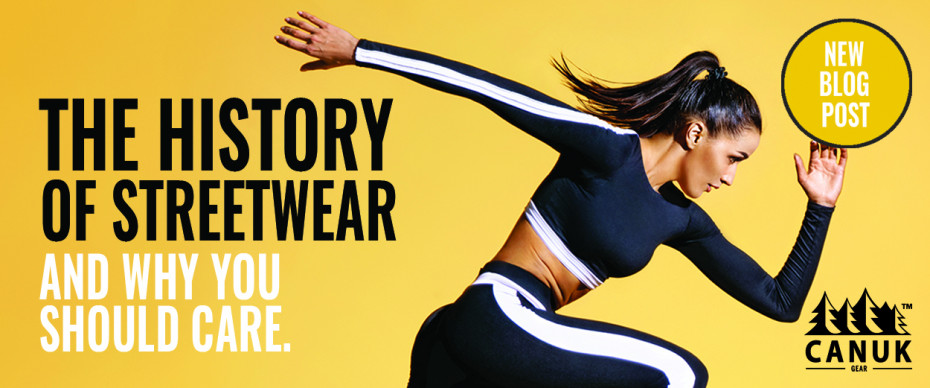
With elements of the west coast surf skate culture and east coast hip-hop culture of the late 70s, streetwear is now a culture of its own built on limited-edition releases and scarcity.
Streetwear is a clothing style that is a combination of casual and modern high fashion. However, it’s difficult to pinpoint the exact origin of streetwear, hip-hop fashion elements, and west coast surf skate culture.
Although Shawn Stussy is credited as starting logo-T-shirts in L.A circa 1980, many diverse elements have built the streetwear culture into what it is today.
Let’s take a look at the history of streetwear in the U.S and how it has impacted today’s high-fashion industry.
What is Streetwear?
Streetwear isn’t a trend. It’s a culture.
Considered one of the most powerful aspects of the fashion industry, the value was 1.5 trillion U.S dollars in 2020.
Streetwear is the biggest buzzword in the fashion industry because the customers span nearly every socio-economic status worldwide.
This lifestyle is much more than lazy clothing.
Think about it: the unlimited designer logos slapped on everything from limited-release sneakers, t-shirts, and hoodies have grown immensely from the do-it-yourself style of the late 70s and early 80s.
It’s not just the price tag that seems steep, but it is also the culture streetwear represents.
Defining Streetwear: The Difficulty
You can define streetwear as casual clothing that follows pop culture.
Subculture groups like skateboarding, surging, rock, and hip hop bring their flavour to the streetwear scene.
When it comes to the fashion industry, it’s hard to nail down the exact definition of streetwear style.
Influences across Haut couture fashion, rock and roll, K-pop, hip hop music, and surf/skate culture all contribute to this ever-growing lifestyle.
Urban fashion is another term for streetwear, and it’s highly speculated that this trend emerged in the late 1970s.
These days, the aesthetic of heavy metal, hip-hop, and punk lent a hand in shaping this fashion genre that is here to stay.
Street Culture: Skate and Surf
The skaters and surfers adopted the DIY approach to dressing across the US, which saw the emergence of their own brands of t-shirts and boards.
Shawn Stussy is thought to have pioneered DIY T-shirts.
He sold printed T-shirts of trademark images that he created and put on his own boards.
As he grew into an icon, so did his clothing and surfboard brand.
It’s unfair to the entire anticulture community and punk rock scene by saying Stussy is the end-all-be-all of creating the streetwear lifestyle we all know and love.
Like punk rock bands and indy musicians producing their own underground music, they made their own t-shirts and merch to sell.
Hip-Hop Fashion Freedom: A People’s Movement
Just like the pioneers of cannabis culture, there were pioneers of Hip-Hop streetwear.
The mid-90s brought out another subculture of streetwear: bling culture. But we’ll get to that in a moment.
Hip-hop’s rap scene of the ’80s and ’90s is the most prominent streetwear influence- think big gold chain.
We can thank rap for the white sneakers and tracksuits we all came to know love (and wear) on top of bling. Take a look at these funky streetwear ideas of the ‘80s and ‘90s.
In the time of Timberland of Nike dominating urban fashion, bling culture was born.
Regardless of the titles, we want to use, urban style and streetwear are considered a movement by the people by most.
With no rules and ever-evolving influences of sub and pop culture, urban fashion is constantly changing.
High-end and luxury brands like Gucci started to experiment with their own streetwear looks thanks to musical subcultures like hip hop and punk rock.
Final Thoughts
The laid-back style of streetwear is here to stay. Because pop and subcultures are ever-evolving, so is urban fashion.
Streetwear is part of the sportswear, luxury, and adopted categories.
This is a culture.
It is not only about fashion.
Streetwear is about stories and lifestyles.
It is a combination of how we live and our feelings. It’s what we read about and what we listen to.
Urban fashion is here to stay because freedom of expression will never be considered unfashionable.







